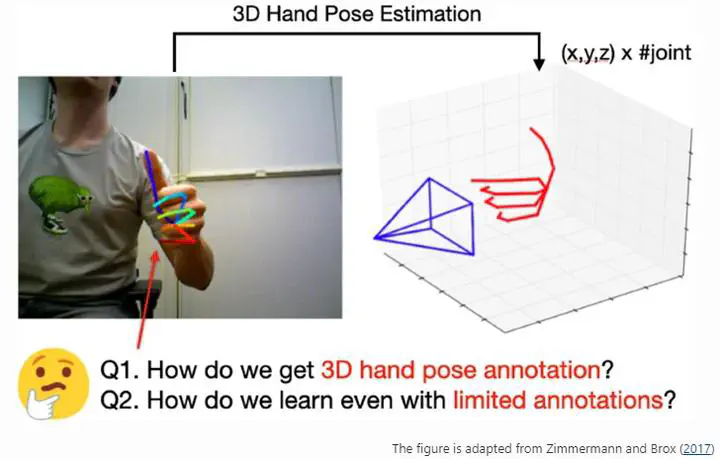
Abstract
In this survey, we present a systematic review of 3D hand pose estimation from the perspective of efficient annotation and learning. 3D hand pose estimation has been an important research area owing to its potential to enable various applications, such as video understanding, AR/VR, and robotics. However, the performance of models is tied to the quality and quantity of annotated 3D hand poses. Under the status quo, acquiring such annotated 3D hand poses is challenging, e.g., due to the difficulty of 3D annotation and the presence of occlusion. To reveal this problem, we review the pros and cons of existing annotation methods classified as manual, synthetic-model-based, hand-sensor-based, and computational approaches. Additionally, we examine methods for learning 3D hand poses when annotated data are scarce, including self-supervised pretraining, semi-supervised learning, and domain adaptation. Based on the study of efficient annotation and learning, we further discuss limitations and possible future directions in this field."